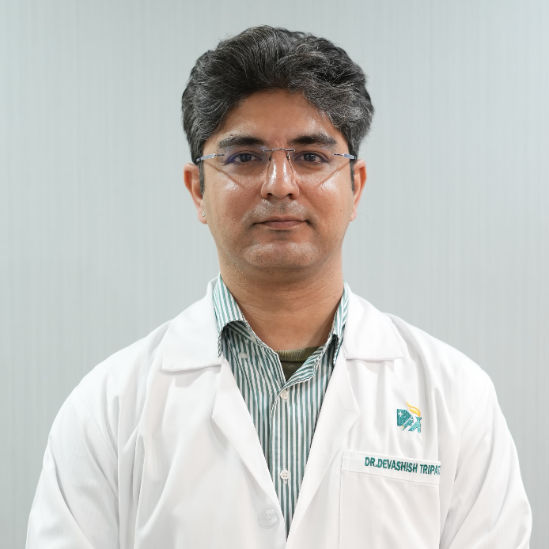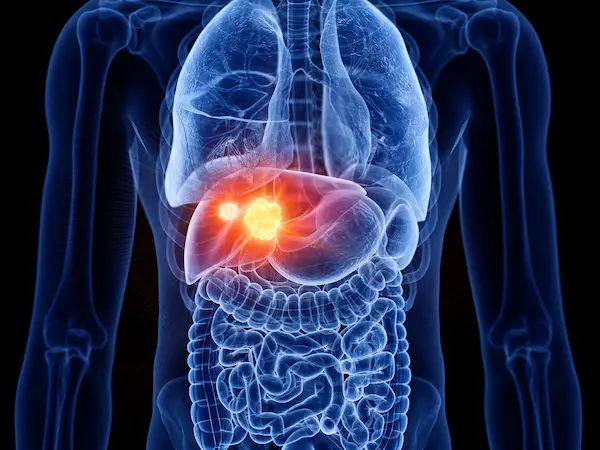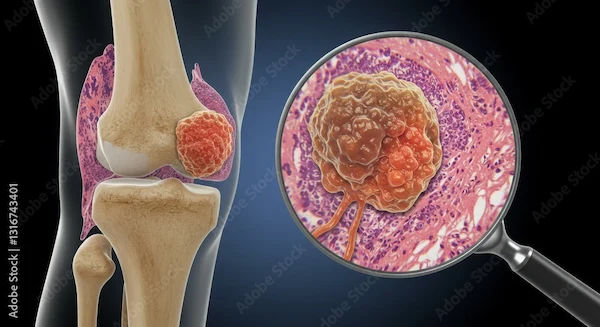Guide to Cancer Treatment With Car T Cell Therapy
Explore CAR T-cell therapy, a personalised cancer treatment that reprogrammes your immune cells to target cancer. Learn how it works, which cancers it treats, potential side effects, and eligibility considerations.

Written by Dr. Rohinipriyanka Pondugula
Reviewed by Dr. M L Ezhilarasan MBBS
Last updated on 6th Oct, 2025

Introduction
For decades, the main weapons against cancer were chemotherapy, radiation, and surgery. While these treatments have saved countless lives, they often come with significant side effects and are not always effective for advanced cancers. A new era has emerged that harnesses the power of the immune system. This revolutionary approach is called CAR T-cell therapy, changing the landscape of cancer treatment. Often described as a "living drug," this sophisticated therapy reprogrammes a patient’s own immune cells to hunt down and destroy cancer cells with remarkable precision.
Understanding this cutting-edge option is crucial if you or a loved one are navigating a complex cancer diagnosis. This guide covers how CAR T-cell therapy works, who it is for, what the process involves, and the hopes and challenges it presents.
What Exactly is CAR T-Cell Therapy? The "Living Drug" Explained
CAR T-cell therapy is a type of immunotherapy. In simple terms, it supercharges your body’s natural defence system, T-
cells, to fight cancer. T-cells are white blood cells that normally identify and eliminate infected or abnormal cells.
Cancer cells, however, can evade these immune soldiers.
CAR T-cell therapy breaks this camouflage. The "CAR" stands for Chimeric Antigen Receptor, a synthetic receptor
engineered in a lab and attached to the patient’s T-cells. This receptor allows T-cells to recognise a specific protein
(antigen) on cancer cells. Once it locks on, the CAR T-cell activates, multiplies, and attacks the cancer.
How is CAR T-Cell Therapy Different from Chemotherapy?
Chemotherapy is a broad-spectrum treatment that kills all rapidly dividing cells, both cancerous and healthy, causing
side effects like hair loss and nausea. CAR T-cell therapy, in contrast, is targeted and personalised. It seeks out only
cancer cells displaying the specific target protein, largely sparing healthy tissue. This personalised approach is why it is
often called a "living drug"; a one-time treatment made from your own living cells that can continue to multiply and
provide long-term protection.
Consult Top Doctors for Personalised Advice
The CAR T-Cell Therapy Process: A Step-by-Step Journey
Understanding each step of the therapy can help set realistic expectations and alleviate anxiety.
Step 1: Collecting Your T-Cells (Leukapheresis)
The first step is collecting T-cells through leukapheresis. Blood is drawn from one arm, passed through a machine that
separates out white blood cells, and returned to the other arm. The collected T-cells are frozen and sent to a lab for
engineering.
Step 2: Engineering the Supercharged Cells
In the lab, scientists use a disabled virus to deliver genetic instructions for the CAR receptor into the T-cells. These
modified cells now produce the CAR protein, are multiplied into millions, and returned to the treatment centre.
Step 3: The Infusion – Unleashing the Engineered Army
Before infusion, patients often receive low-dose chemotherapy to make room for the new cells. The infusion itself is like
a blood transfusion, taking about 30 minutes. The cells then circulate, recognise their target, and expand in the body.
Which Cancers Can Be Treated with CAR T-Cell Therapy?
CAR T-cell therapy is most effective against certain blood cancers, known as hematologic malignancies.
A. Haematologic Cancers: Lymphomas, Leukaemias, and Myeloma
FDA-approved CAR T-cell therapies target:
- Certain B-cell lymphomas, including Diffuse Large B-Cell Lymphoma (DLBCL)
- B-cell acute lymphoblastic leukaemia (ALL), primarily in children and young adults
- Multiple myeloma
These therapies have achieved remarkable remission rates in patients who have relapsed or not responded to other
treatments.
B. The Challenge of Solid Tumours and Future Research
Treating solid tumours remains challenging due to the tumour microenvironment and lack of unique target proteins.
Ongoing research aims to expand CAR T-cell therapy to more cancer types.
Understanding the Side Effects and Risks
CAR T-cell therapy can cause significant side effects related to immune activation.
1. Cytokine Release Syndrome (CRS): The Common Immune Response
CRS is a systemic inflammatory response caused by activated CAR T-cells releasing cytokines. Symptoms range from
mild to severe and include high fever, fatigue, nausea, low blood pressure, and difficulty breathing. Hospitals manage
CRS with supportive care and medications like tocilizumab.
Recognising the Symptoms of CRS
Symptoms typically appear within the first week after infusion and require prompt medical attention.
2. Neurologic Toxicities (ICANS)
ICANS can cause confusion, speech difficulties, tremors, seizures, or coma. The condition is monitored and treated in
the hospital, usually resolving in a few days.
Is CAR T-Cell Therapy Right for You? Eligibility and Considerations
Eligibility is determined by a specialised medical team. CAR T-cell therapy is usually considered for patients with
relapsed or refractory blood cancers. Factors include cancer type, prior treatments, overall health, and target availability
on cancer cells. Cost is also significant. Consulting a specialist through Apollo24|7 can help determine candidacy.
The Future is Now: What's Next for CAR T-Cell Therapy?
Next-generation CAR T-cells aim to be safer, more potent, and able to overcome cancer resistance mechanisms.
Innovations include:
- "Off-the-shelf" CAR T-cells from donor cells
- Dual-targeting CARs recognising two antigens
- CAR T-cells designed for solid tumours
Conclusion
CAR T-cell therapy represents a transformative advance in cancer treatment, offering personalised, targeted immune
defence. While side effects, cost, and limited application to solid tumours remain challenges, the potential for remission and lasting results is unprecedented. Understanding the therapy, consulting your medical team, and considering eligibility through Apollo24|7 empowers patients to explore all available options.
Consult Top Medical Oncologists
Consult Top Medical Oncologists

Dr. Sanchayan Mandal
Medical Oncologist
17 Years • MBBS, DrNB( MEDICAL ONCOLOGY), DNB (RADIOTHERAPY),ECMO. PDCR. ASCO
Kolkata
MCR SUPER SPECIALITY POLY CLINIC & PATHOLOGY, Kolkata
Dr Sumanth R
General Physician
2 Years • MBBS
Bengaluru
PRESTIGE SHANTHINIKETAN - SOCIETY CLINIC, Bengaluru

Dr.sanchayan Mandal
Medical Oncologist
17 Years • MBBS, DrNB( MEDICAL ONCOLOGY), DNB (RADIOTHERAPY),ECMO. PDCR. ASCO
Kolkata
Dr. Sanchayan Mandal Oncology Clinic, Kolkata

Dr. Rupam Manna
Radiation Specialist Oncologist
4 Years • MBBS MD(RADIO THERAPY)
Barasat
Diab-Eat-Ease, Barasat

Dr Devashish Tripathi
Radiation Specialist Oncologist
20 Years • MBBS, PLAB, MRCP (UK)- General Medicine, FRCR (Oncology), Certificate of Completion of Training (CCT)- Clinical Oncology
Delhi
Apollo Hospitals Indraprastha, Delhi
Consult Top Doctors for Personalised Advice

Dr. Sanchayan Mandal
Medical Oncologist
17 Years • MBBS, DrNB( MEDICAL ONCOLOGY), DNB (RADIOTHERAPY),ECMO. PDCR. ASCO
Kolkata
MCR SUPER SPECIALITY POLY CLINIC & PATHOLOGY, Kolkata
Dr Sumanth R
General Physician
2 Years • MBBS
Bengaluru
PRESTIGE SHANTHINIKETAN - SOCIETY CLINIC, Bengaluru

Dr.sanchayan Mandal
Medical Oncologist
17 Years • MBBS, DrNB( MEDICAL ONCOLOGY), DNB (RADIOTHERAPY),ECMO. PDCR. ASCO
Kolkata
Dr. Sanchayan Mandal Oncology Clinic, Kolkata

Dr. Rupam Manna
Radiation Specialist Oncologist
4 Years • MBBS MD(RADIO THERAPY)
Barasat
Diab-Eat-Ease, Barasat

Dr Devashish Tripathi
Radiation Specialist Oncologist
20 Years • MBBS, PLAB, MRCP (UK)- General Medicine, FRCR (Oncology), Certificate of Completion of Training (CCT)- Clinical Oncology
Delhi
Apollo Hospitals Indraprastha, Delhi
More articles from Cancer
Frequently Asked Questions
Q1. How long does it take to see if CAR T-cell therapy is working?
Patients typically undergo scans and blood tests about 30 days after infusion. Blood counts and biomarkers are monitored in the weeks following treatment for early indications.
Q2. What is the long-term prognosis after CAR T-cell therapy?
Results vary. Some patients achieve long-term remission, potentially a cure, while others may need additional treatment later. Ongoing follow-up is essential.
Q3. Can CAR T-cell therapy be used more than once?
Yes, if the cancer expresses the target antigen, a second infusion may be considered based on the patient’s situation.
Q4. What is the cost of CAR T-cell therapy, and is it covered by insurance?
It is among the most expensive cancer treatments, often costing hundreds of thousands of dollars. Insurance typically covers FDA-approved indications, though pre-authorization is required.
Q5. Are there any lifestyle changes needed after the treatment?
Patients need to avoid infections in the first months while their immune system recovers. Fatigue is common, but many patients return to a normal lifestyle over time with regular monitoring.

.webp)


